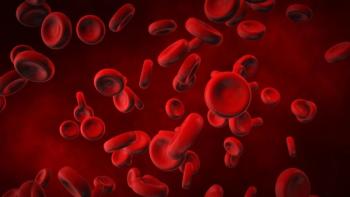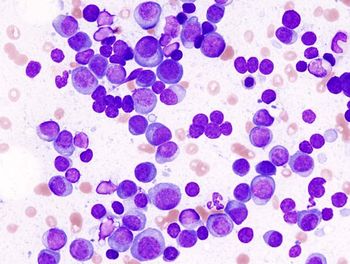
Leronlimab Plus Carboplatin Appears to Yield Survival Benefit in Metastatic Triple-Negative Breast Cancer
Patients with metastatic triple-negative breast cancer being treated with leronlimab and carboplatin have experienced a decrease in cancer-associated macrophage-like cells and an increase in survival benefit.
Leronlimab (PRO 140) has demonstrated promising preliminary results in a phase 1b/2 clinical trial (NCT03838367) for patients with metastatic triple negative breast cancer (mTNBC), according to a press release from drug developer CytoDyn.1
Patients who were given leronlimab—a CCR5 antagonist designed to target multiple therapeutic markers—with carboplatin experienced a 72% decrease in cancer-associated macrophage-like cells (CAMLs) after 30 days on the treatment. Investigators linked the decrease in CAMLs to a 300% increase in mean progression-free survival (PFS), as well as a 450% increase in 12-month overall survival (OS). Additionally, circulating tumor cells have appeared to be related to slowing progression and lower mortality.
“While these are only interim results at the 12-month point, our ability to rapidly monitor and identify patients [who] appear to respond to leronlimab using a single tube of blood is quite an encouraging finding,” Daniel Adams, Director of Clinical Research and Development, Creatv MicroTech, Inc., said in a press release.
The non-randomized open-label study included 30 patients with mTNBC. In the first phase, patients were divided into 3 experimental cohorts. In cohort A, patients received 350 mg of leronlimab weekly and carboplatin every 3 weeks; cohort B treated patients with 525 mg of leronlimab weekly and carboplatin every 3 weeks; and cohort C administered 700 mg of leronlimab weekly and carboplatin every 3 weeks.
The second phase aimed to determine the maximum tolerated dose (MTD)of the combination treatment. In this phase, patients will be given the MTD of leronlimab plus carboplatin, with the amount of MTD being determined after phase 1 results.
The trial enrolled patients over 18 years of age who demonstration CCR5 by immunohistochemistry (IHC). Additionally, patients needed to be chemotherapy and/or checkpoint inhibitor naïve in the metastatic setting but have been exposed to taxane and anthracyclines in the neoadjuvant or adjuvant setting. Patients also needed to have measurable disease based on RECIST 1.1 criteria and have an ECOG performance status of 0 or 1, as well as a life expectancy of at least 6 months.
The primary outcome measure for the phase 1b portion of the trial is to determine and MTD of leronlimab in combination with carboplatin, and the phase 2 primary outcome measure is PFS. Secondary outcome measures for the study's second phase include PFS, overall response rate, and overall survival, to name a few.
“We are very excited about these preliminary results and are eager to discuss the next regulatory steps based on [these] data,” Scott Kelly, MD, chief medical officer of CytoDyns and chairman of the board said in a press release. “Based on leronlimab’s mechanism of action, we believe these results may provide tangible hope for patients suffering from mTNBC, and potentially other forms of cancer."
Leronlimab has previously been granted a fast track designation by the FDA for patients with human immunodeficiency virus, as well as for metastatic cancer. Additionally, leronlimab was previously examined as a treatment for
Reference
- CytoDyn announces preliminary results from 30 mTNBC patients treat with leronlimab. Decreases in CAMLs after 4 doses of leronlimab were identified in over 70% of patients and were associated with a 450% significant increase in overall survival at 12-month analysis. News Release. CytoDyn. July 19, 2021. Accessed July 19, 2021.
https://bit.ly/3wUltxM - First two patients enrolled in randomized phase 2, COVID-19 trial with leronlimab; five more severely ill COVID-19 patients treated under emergency IND and two patients have already extubated. News release. CytoDyn. April 6, 2020. Accessed July 19, 2021. https://bit.ly/3wPOLh5
Newsletter
Stay up to date on recent advances in the multidisciplinary approach to cancer.

















































































